“I bloody love fashion,” exclaims Erica Flannery, one of this year’s 25 fashion graduates from Limerick School of Art and Design (LSAD), whose collection, Like A Rhizome Cowboy (rhizomes being a tangled web of knotted stems), explores how fashion can challenge the contemporary culture of surveillance.
In a world in which we are under constant scrutiny by ever more sophisticated machines, her riposte is to make clothes that evade observation by artificial intelligence. “I wanted to confuse the machine,” she says of her abstract, amorphous shapes with their angular geometric points and sinuous curls. The concept makes for striking, unconventional silhouettes. “Covid really speeded up this tech-centric world and I wanted to reflect that in my work,” she says.
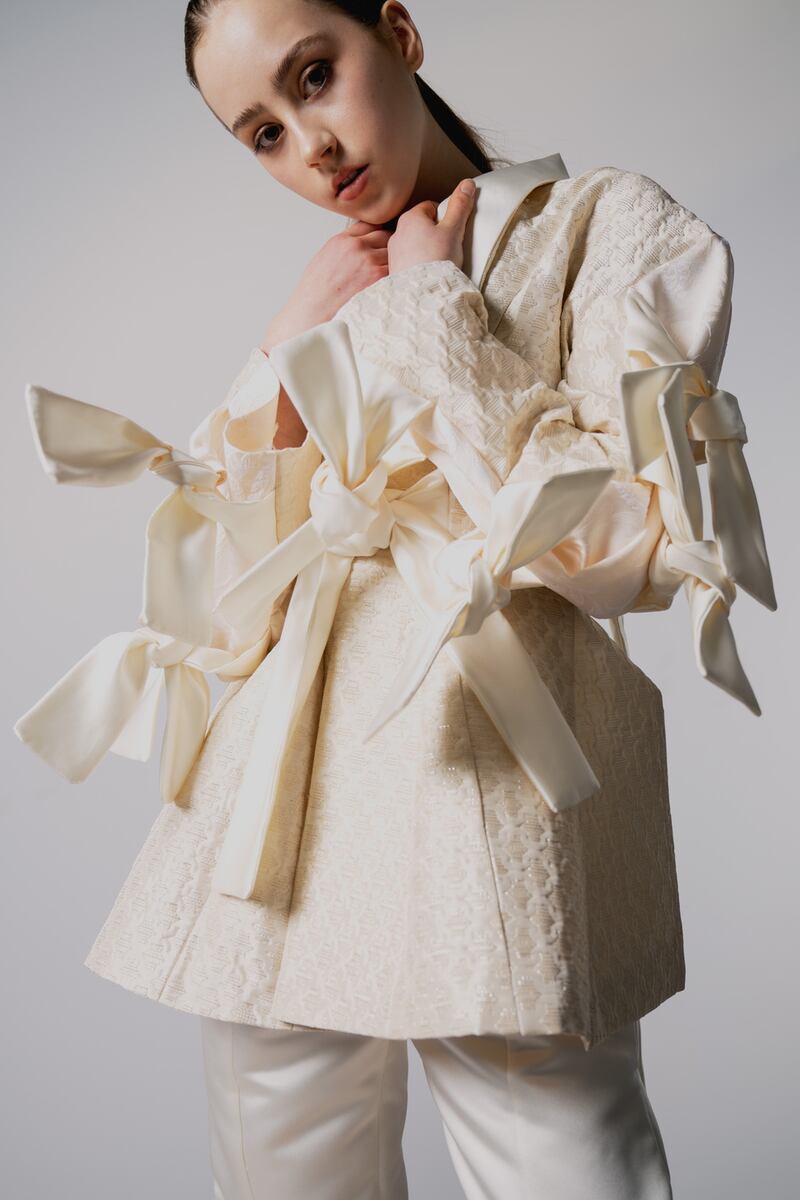
Shane Nolan’s collection called Up the Áras was based around a dream he had as a child about a party in Áras an Uachtaráin. “It developed into a collection in which I reference queer and dance culture,” he says. The resulting cat suit in stretch foil with a blazer and pleated skirt is a mix of classic tailoring with shiny additions. “My aim was to transport the wearer into the 1970s with modern references. For me it is interesting to look back to a simpler place which is now invaded by social media. Then it was about living life; now it is living life through a phone.”
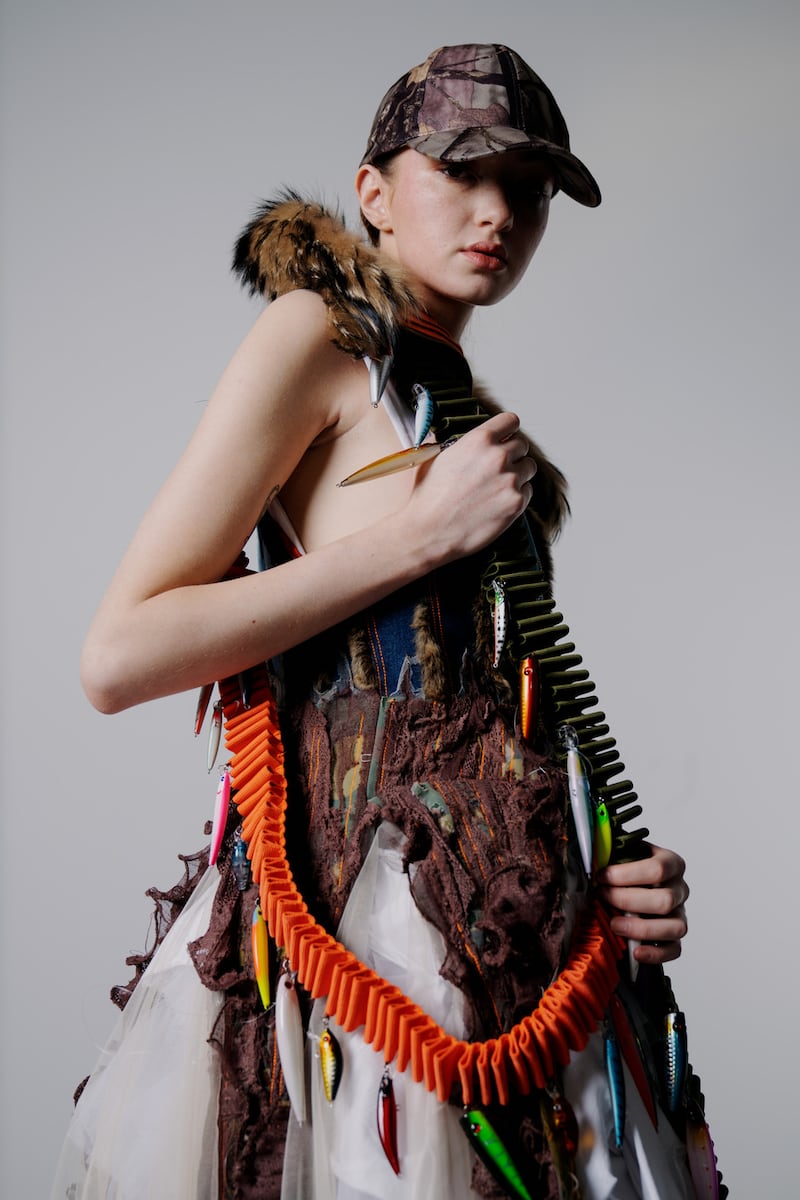
These are just two of the students who will present their work at the first post-pandemic physical fashion show in two years on Saturday, June 4th on the campus at LSAD. Michelle Molloy, joint programme leader of the BA in Fashion Design, says “being online they missed out on a lot, but it is always interesting to see how they reflect the world around them and very diverse interests. There is a real feeling of energy and enthusiasm and a desire to get out there into the world.”
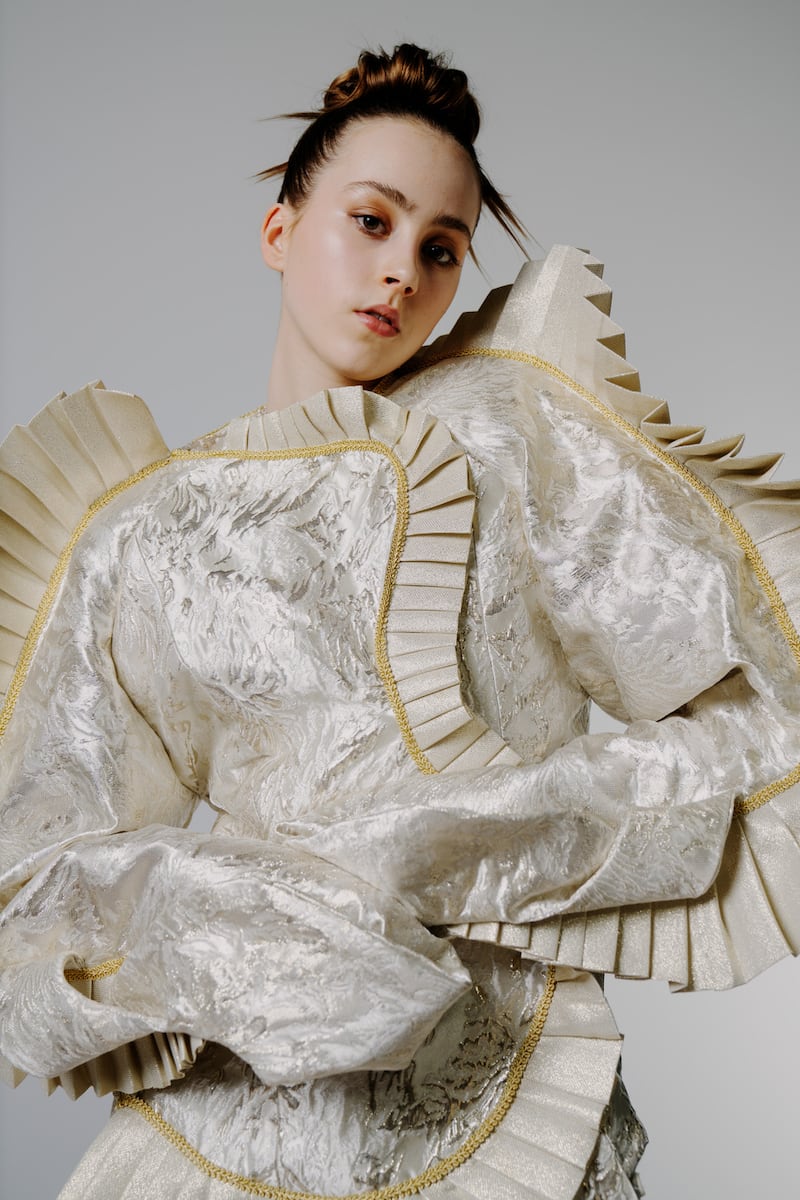
This year she and joint programme leader Siobhán Hanley took students to Paris on a fabric research trip, where they also took in exhibitions of Thierry Mugler and Azzedine Alaia. The fabrics sourced, according to Hanley, were mostly recycled or deadstock. “That is getting more prevalent in projects,” she says. “They are asking questions about content and composition and quantities. There are interesting cuts and patterns and fabrics stretched in different ways.”
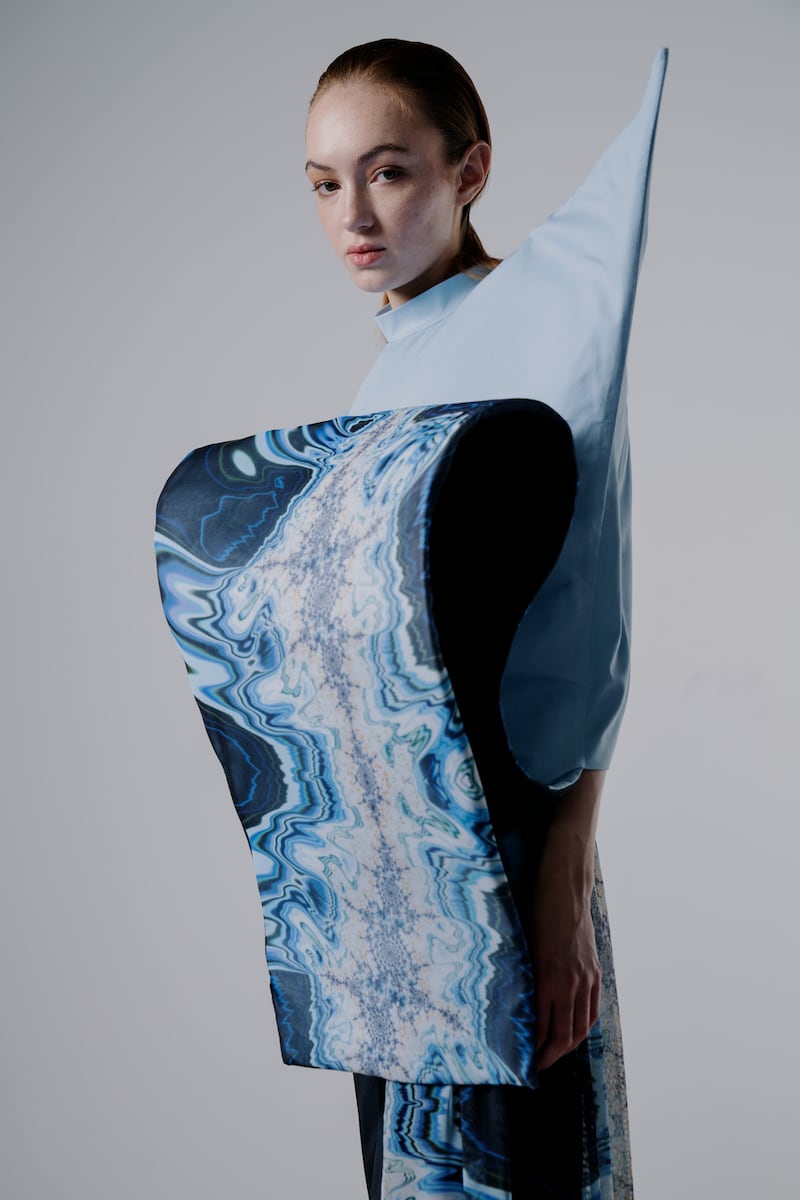
Flannery, who spent four months on a placement in Berlin, is considering the possibility of doing an MA, while Nolan is moving to London for the summer where he hopes to find work with Irish menswear designer Robyn Lynch, before heading to Stockholm to work in Acne’s studio in September.
NCAD
At NCAD, acting head of design, body and environment Bernie McCoy says this year’s 17 graduates are creating “wearables that resonate and enhance personal identity. Values are embedded in the design approach through choice of fabrics and embellishment.” Like the Limerick students, the focus is on sustainable practices, longevity of wear and use of deadstock fabrics. The stories they tell with their collections connect emotionally with their audiences, she says.
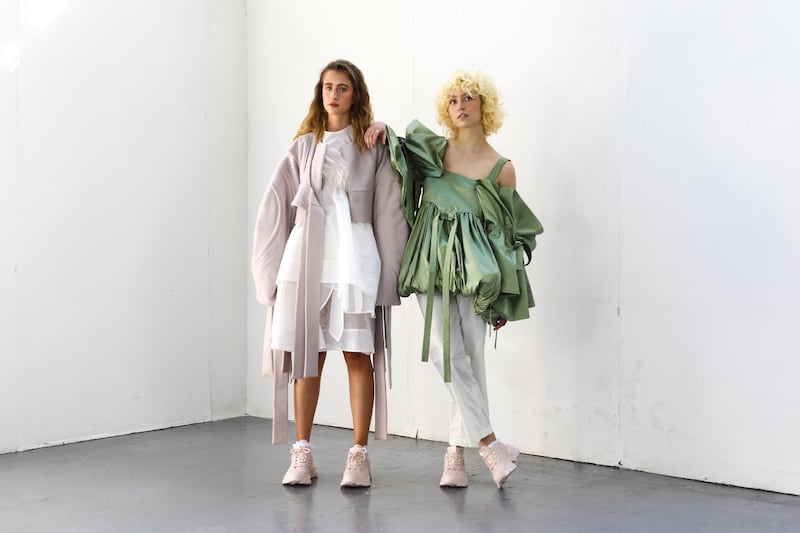
Rebecca McCabe’s starting point for her collection called Pookie was how human behaviour changed during lockdown “and that huge battle with your own thoughts and the unknown as that continued”.
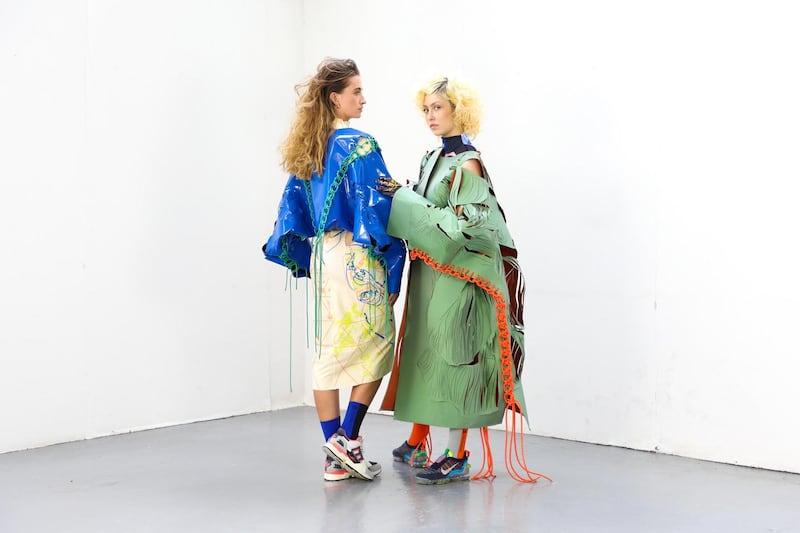
She collected images throughout that period, and for her collection used them to explore ideas of escapism on a physical and psychological level and how relationships with formal clothing changed. Sportswear elements are apparent across the collection. “Dress got more casual and more about comfort, and many invested in higher end clothing,” says McCabe, whose ambition is to work with a designer committed to sustainability.
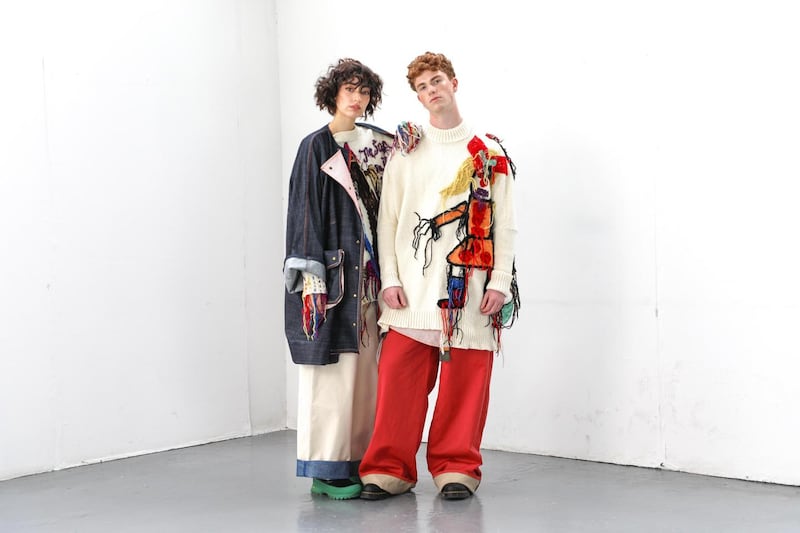
Leah Kelly’s collection Pennywell is a tribute to her grandmother Dolores Kelly, who grew up in an orphanage in Limerick with her four sisters after their mother died of TB. The name refers to a road near the orphanage where the sisters would collect blackberries. Using the Japanese shibori technique, Kelly created clusters from buttons and jar lids wrapped in fabric and boiled that, when dried, reflected those shapes. The delicate all-white collection – symbolising the purity and innocence of childhood – with some pink undertones was created using cotton bed sheets, organdie, power mesh and silk organza. Kelly intends to further her skills with a course in fashion buying in London.

Also planning to head to London in August is Rachel Morris. The idea for her unisex collection, Sin, no Sin, grew from looking at her mother’s old religious books, and thinking about the influence of the Catholic Church on Irish society and its attitudes to sexuality. Using knit and drypoint print techniques, the collection challenges gender norms. Morris hopes “that kids when they see my collection will realise that there is no shame in being gay”. She is interested in the collaboration between design and fine art, and hopes to find work with a knitwear or textile designer.
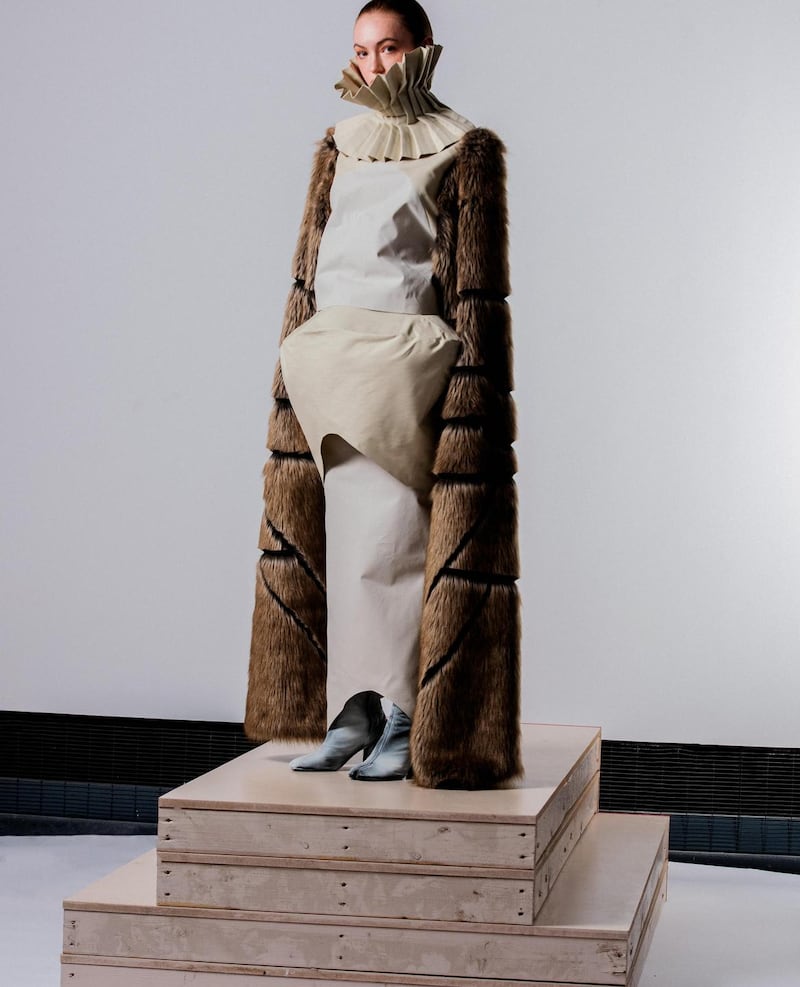
The NCAD graduate show will be open to the public on the campus in Thomas Street, Dublin from June 8th to 14th.












